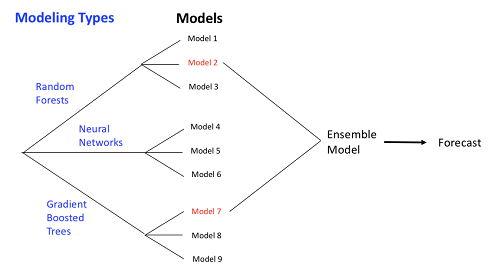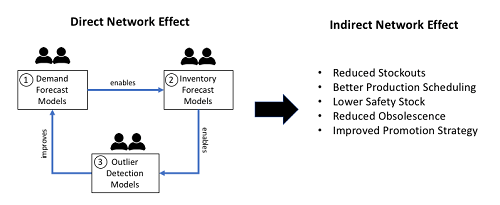NextGen Supply Chain: Data science comes to the supply chain
Supply chain management has been slow to leverage advances in data science. It's time to play catch up.
Although supply chain management has been slow to the game, advances in data science are now quickly changing the way supply chains are managed. With free and powerful tools like Python and R now routinely being used to solve some of the most complex business problems, as evidenced on the data science competition site Kaggle.com, the days when you could develop deep insights and competitive advantage using spreadsheet models are long gone.
Data science can be leveraged in several ways. For most organizations applying it to forecasting will be the most valuable. The reason is intuitive: The value of downstream models is impacted by the quality of their inputs, which for many models will be the accuracy of a forecast input.
Although it is true that building an accurate forecasting model is both an art and science, there are now more resources than ever which can be used to build, train and optimize cutting edge forecasting capabilities. In addition to the wide array of models types available, the ability to rent cloud computing power means that even the most computationally complex models can now be trained without impacting your existing IT infrastructure.
At MonarchFx we are leveraging these innovations and partnering with universities to develop a flexible and scalable forecasting framework across multiple levels of SKUs, products and brand aggregation, resulting in a hierarchical forecasting ecosystem.
There is no one-size-fits-all solution. Multiple models and model types must be used at every stage in the hierarchy, from SKU-level to brand-level. An example of this approach is shown in Figure 1 below. Once several models have been constructed and measured against one another, there is an option to take the best performing models and combine their results into a hybrid forecast. This technique is called ensemble modeling and has proven to be superior to individual models in several real-world situations. (Note that traditional methods like ARIMA are less commonly used today because multivariate models usually outperform them. However, ARIMAX methods are still quite powerful).
Figure 1

The key value of a more accurate forecast is that several areas can be directly and simultaneously impacted including:
1) Reduced Stockouts: reduces lost sales opportunities and increases customer satisfaction.
2) Better Production Scheduling: predicting near-term demand changes more accurately will benefit mid-term and long-term production planning.
3) Lower Safety Stock: reduces working capital requirements.
4) Reduced Obsolescence: reduces total cost and frees up valuable space in fulfillment centers.
5) Improved Promotion Strategy: having better information on the supply and demand of families of products will enable promotions to be executed more efficiently.
Due to the fact multiple interrelated areas can be impacted, an endogenous network effect can quickly emerge, as shown in Figure 2. Here we can see two types of network effects:
• Direct network effects occur when the value of one service increases exponentially with:
o The number of the users using the same service, or
o The establishment of new downstream services that improve the first service. This creates a reinforcement loop of continuous improvement in performance.
• Indirect network effects occur when the value of a new service increases with the number of applications and decisions the service is used to drive or inform.
Figure 2

At first glance, you might look at Figure 2 and see that new information is created and fed forward to be leveraged by the next service. Less apparent is the knowledge being created from building and testing forecasting models. This knowledge includes everything from data cleansing techniques to hyper-parameter selection within models. It is this knowledge that is the most valuable. Thus, one effect not seen in Figure 2 is the contribution to organizational Knowledge Management (KM). KM is the process of creating and leveraging organizational knowledge to create maximum value. The KM created here stems from sharing lessons learned, heuristics, and rules of thumb learned in the modeling process itself.
A salient quote on this topic can be found in the recent Harvard Business Review article, Great Businesses Scale Their Learning, Not Just Their Operations, “most organizations seem to use digital technology to simply automate tasks and eliminate people. But scalable learning harnesses technology to augment the capabilities of people.” Companies that build and leverage an effective data science ecosystem before their competition will stand to reap the largest rewards for their efforts. After all, as the Shell Oil Company executive Arie de Geus famously said, “The ability to learn faster than your competitors may be the only sustainable competitive advantage.”
David Lengacher is Head of Data Science for MonarchFx












